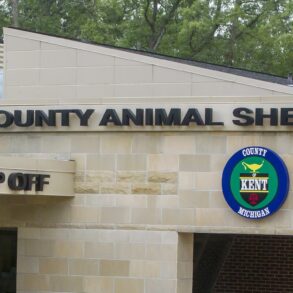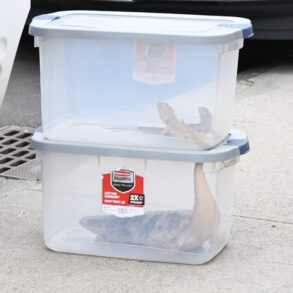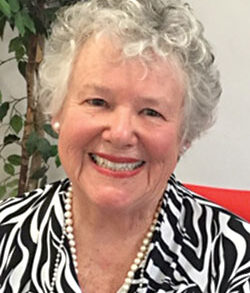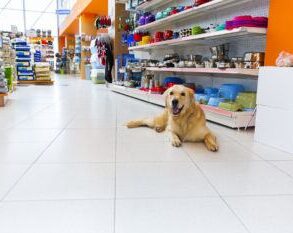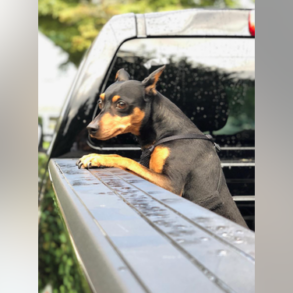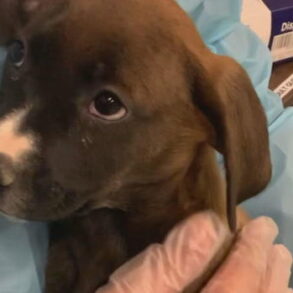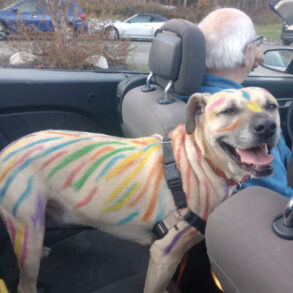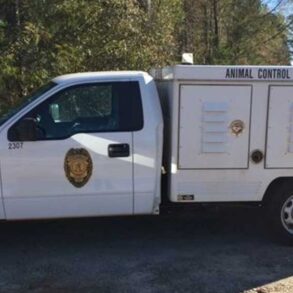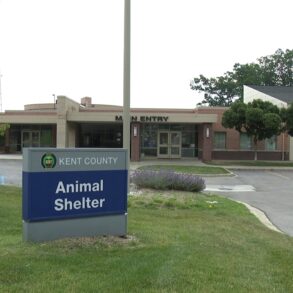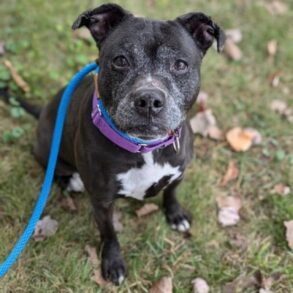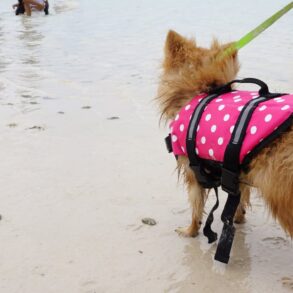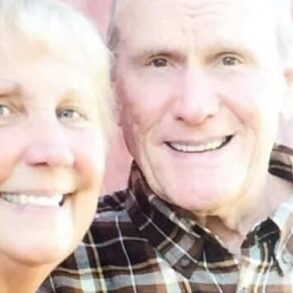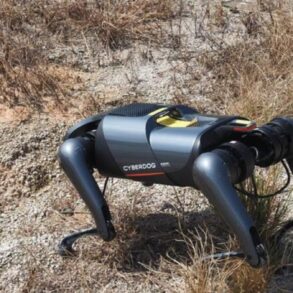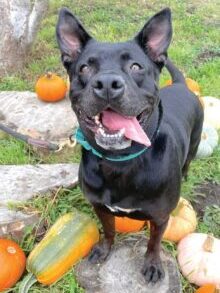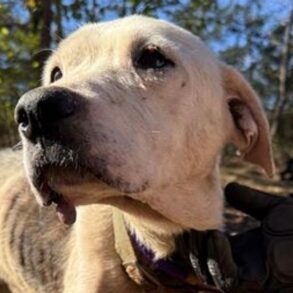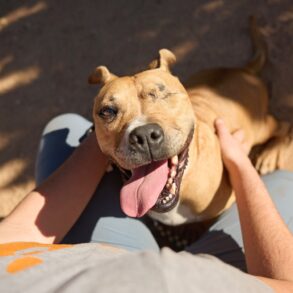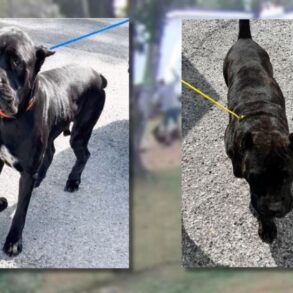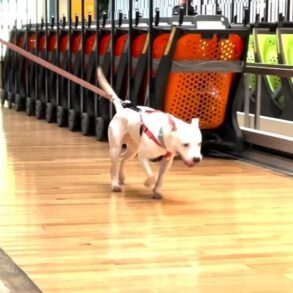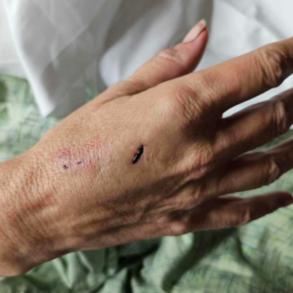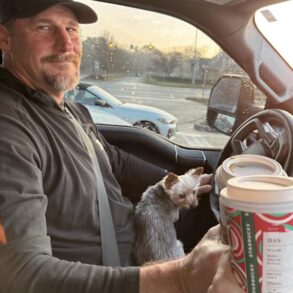Outside Denver’s Rose Medical Center, the snow is flying. Inside, third floor, Labor and Delivery, there’s a flurry of activity.
“There’s a lot of action up here. It can be very stressful at times,” said Dr. Kristina Fraser, an OB-GYN in blue scrubs.
Just as we start an interview, nurses wheel a very pregnant mom just past us.
“We’re going to bring a baby into this world safely,” Fraser said, “and off we go.”
She’s ready in part thanks to a calming moment just a few minutes earlier.
A pair of dogs, tails wagging, had arrived at a nursing station, causing about a dozen medical professionals to melt into a collective puddle of affection. A yellow lab named Peppi showered Fraser in hugs and kisses. “I don’t know if a human baby smells as good as that puppy breath!” Fraser said, as her colleagues laughed.
The dogs aren’t visitors. They work here too, specifically for the benefit of the staff, Fraser said. “I feel like that dog just walks on and everybody takes a big deep breath and gets down on the ground and has a few moments of just decompressing,” Fraser said. “It’s great. It’s amazing.”
“Peppi just knows how to light up the room.”
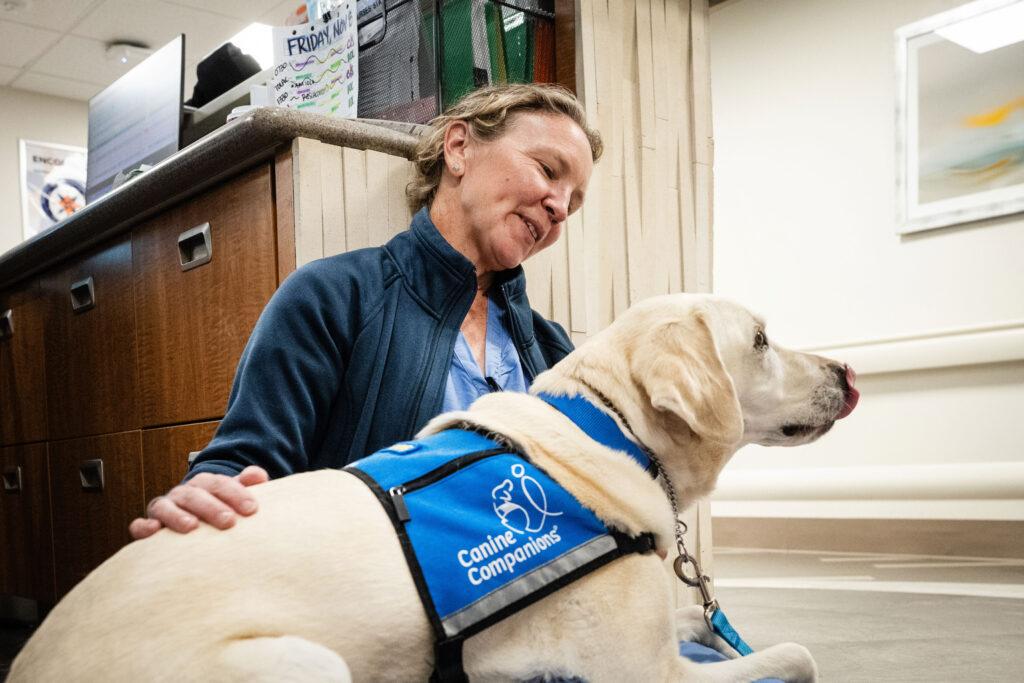
Hart Van Denburg/CPR News
Peppi’s handler is Susan Ryan, a doctor at Rose.
Her journey to that role started after suffering from PTSD from years as an emergency physician. “I just was messed up and I knew it,” Ryan said, isolating more at home and not wanting to engage with friends. “I shoved it all in. I think we all do.”
Doctors, and other providers, are good at hiding their struggles and have to compartmentalize, she said.
“How else can I go from a patient who had a cardiac arrest deal with the family members telling them that and go to a room where another person is mad that they’ve had to wait 45 minutes for their ear pain? And I have to flip that switch.”
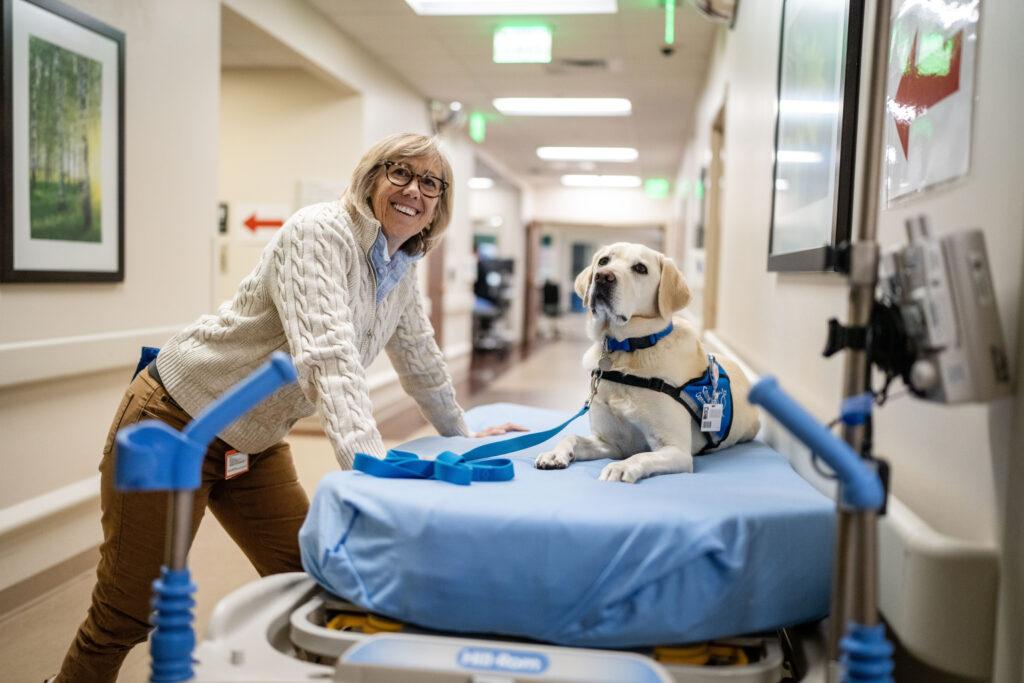
Hart Van Denburg/CPR News
To cope, Ryan started doing therapy with horses. She loved the non-verbal communication, the intuitive connection. But she couldn’t have a horse in her backyard, so she got a Labrador.
Ryan eventually was trained with a national service dog group called Canine Companions and in the process became a pioneer, the first doctor with the group to have a facility dog in an emergency room.
Rose gave her approval to bring Peppi to work during her ER shifts. Colleagues said they were delighted that a dog is part of their work life.
“When I have a bad day at work and I come to Rose and Peppi is here, my day’s going to be made better,” EMT Jasmine Richardson said. “And if I have a patient who’s having a tough day, Peppi just knows how to light up the room.”
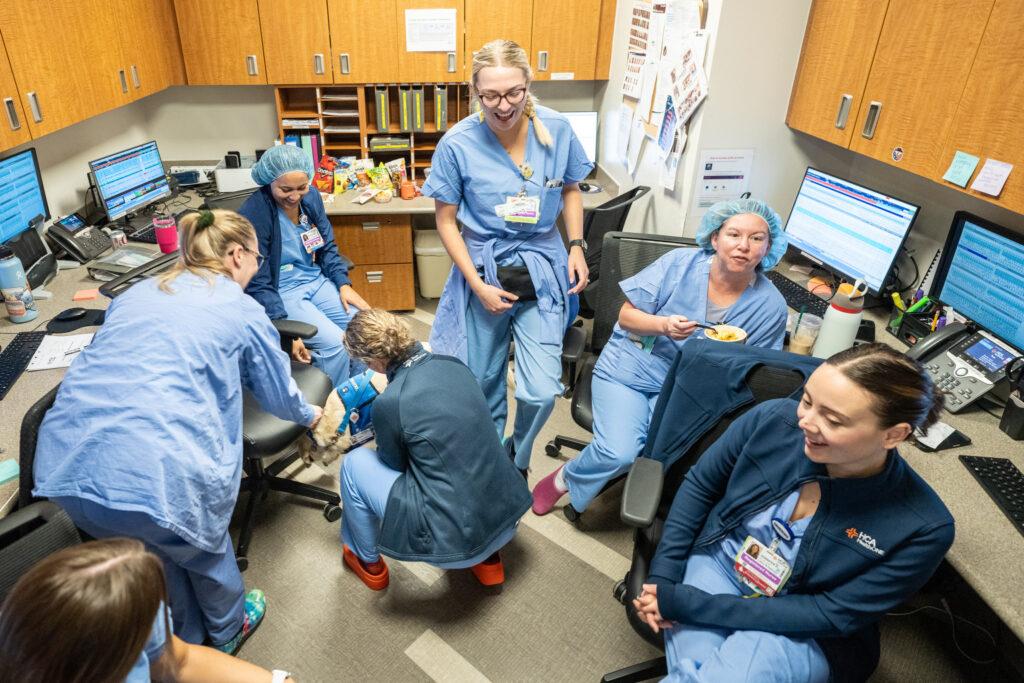
Hart Van Denburg/CPR News
“You know, we’re not selling cookies, we’re trying to help people that are in bad shape,” nursing supervisor Eric Vaillancourt said. “So when Peppi comes around, you sort of release that tension because Peppi is joyful.”
Ryan said another dog, Wynn, was with her when the stress hit fever pitch during the pandemic.
“We had new nurses that had never seen death before — and now they’re seeing a Covid death. And we were worried sick we’re dying. [The dogs] saved people.”
— Dr. Susan Ryan
“We had new nurses that had never seen death before and now they’re seeing a Covid death. And we were worried sick we’re dying,” she said. It made a difference. “It saved people.”
Ryan said one study found petting a dog quickly reduced levels of stress hormones, and linked the presence of a dog with decreased heart rate and blood pressure. “The world is stressful. So you have the calming presence, nonjudgmental, you can lean into them, you feel confident and comfortable when they’re there,” Ryan said.
A photo of Wynn and Ryan, all decked out in protective gear, was posted and went viral globally in the early days of COVID-19. “I did interviews constantly!” she said.
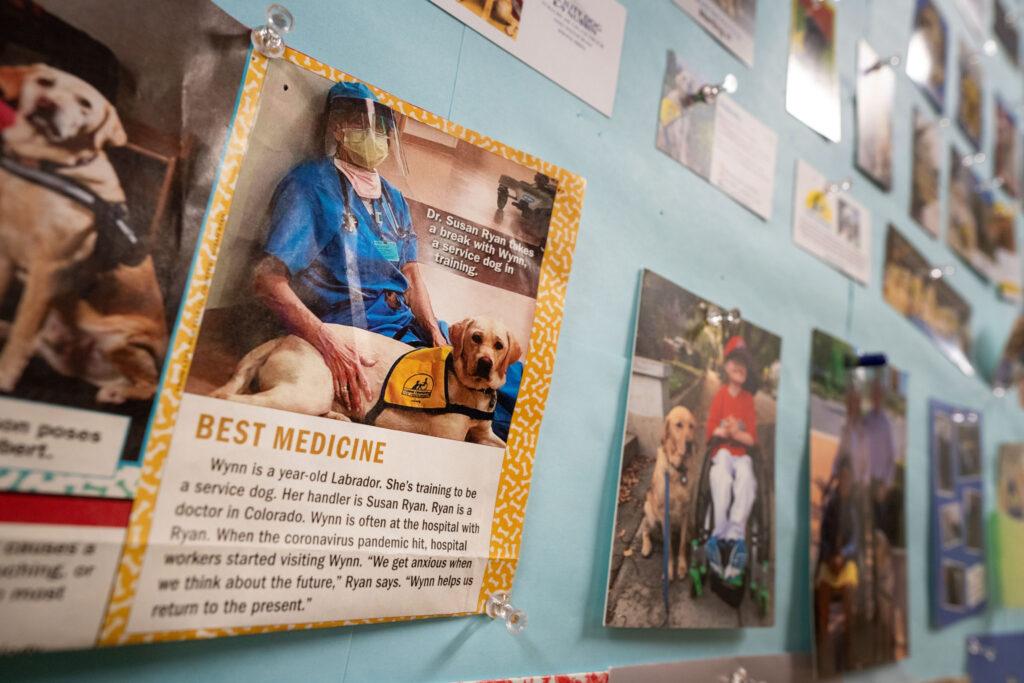
Hart Van Denburg/CPR News
Rose’s CEO Casey Guber became such a believer in the canine connection he got his own trained dog that he brings to the hospital, a black lab/retriever mix named Ralphie.
She wears a badge: Chief Dog Officer.
Guber said she’s a big morale booster. “Phenomenal,” he said. “It is not uncommon to see a surgeon coming down to our administration office and rolling on the ground with Ralphie or one of our nurses taking Ralphie out for a walk in the park.”
“Healing Better and Faster”
Not far away, at Rocky Mountain Children’s Hospital, a similar story. Grayson, a 5-year-old, tries to set up a toy camera as a group of providers gathers around and a dog sits patiently not far away.
Grayson was born with a heart disease and has spent a lot of time here, said his mom, Ashley Petersen.
“He’s been in and out of this hospital. This is definitely a second home to us,” she said.
There are two lab retrievers at Rocky Mountain Children’s, facility dogs Lemon and Posey. They’re there for patients, not staff.
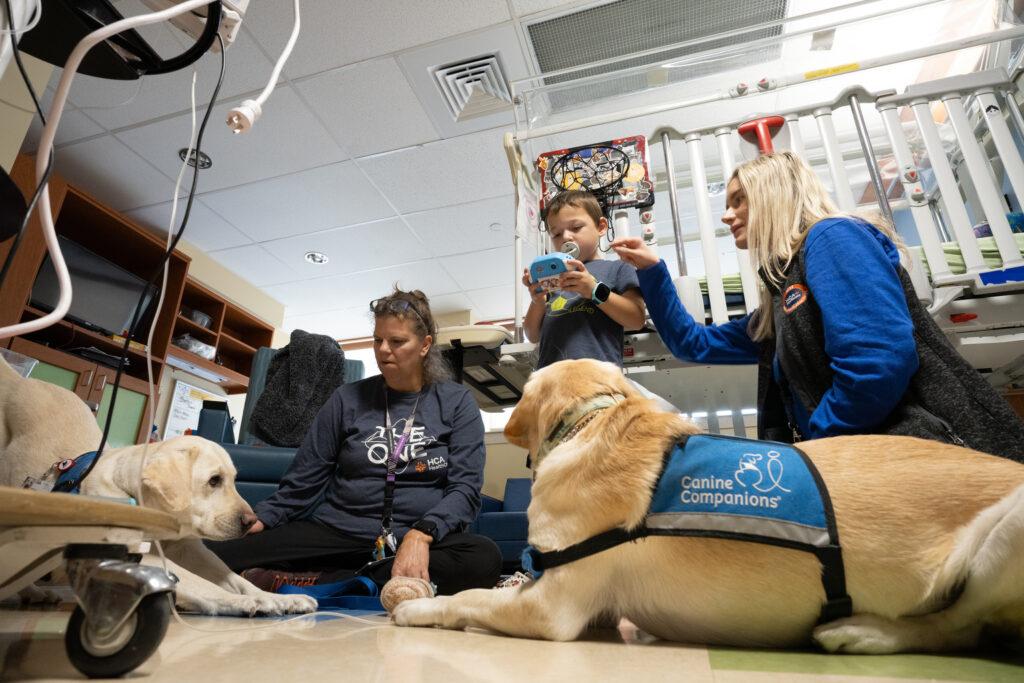
Hart Van Denburg/CPR News
A canine companion provides comfort, plus a fluffy and fun distraction during her son’s medical care — this time fixing an infected IV line.
“He is very hesitant with a lot of things, but if Posey or Lemon jumps in his bed and just cuddles him, he can do all the things with them by his side,” Petersen said.
“I had no clue the depth and the breadth of the impact she would have on the hospital,” said Kara Hellums, a specialist who works with Grayson and is also Posey’s handler.
She said the dogs reduce stress and help sick kids stay active in an effortless way. More than that, they give unconditional love.
“When we are feeling those good feelings, those positive feelings, then our bodies are healing better and faster,” Hellums said. “We’re having a more positive experience with health care.”
Petersen said sometimes Grayson will even race the halls in a toy car with a dog in the passenger seat. “That’s just something that brings him so much joy,” she said.
She said every hospital should have a dog there, sharing its healing power.
Dogs as cultural connectors
Dogs are being used in greater numbers and a broader range of settings than ever, working in hospitals, schools, courtrooms and beyond.
“I think that people are really seeing the benefits a service dog can provide,” said Jeanine Konopelski, the chief marketing officer for Canine Companions, which is based in Santa Rosa, California.
The group was founded nearly 50 years ago and has partnered more than 8,000 dogs with people. It serves people with physical disabilities including for those who are deaf or hard of hearing, children that might have developmental delays or autism and assisting veterans with PTSD.
The list of professions where you can now find a dog helping is long: occupational therapist, physical therapist, rehabilitation nurse, rehabilitation psychologist, speech-language pathologist, child life specialist, social worker, hospice nurse, home health care aide, trauma specialist and special education teacher.
Emerging research is bearing out how valuable dogs can be in a hospital, confirming the “transcendent nature of utilizing a calming presence that everybody can understand,” said Kelly Wagner, child life and expressive therapies manager at Dell Children’s Medical Center of Central Texas, in Austin.
Wagner is also the handler for a facility dog named Reba.
The hospital created an animal assisted therapy program in 2021 and has four dogs and is waiting for another.
Research, not yet published, by the hospital’s program has found animal assisted therapy, combined with a certified child life specialist, reduced anxiety in pediatric patients. That included before, during and after medical procedures.
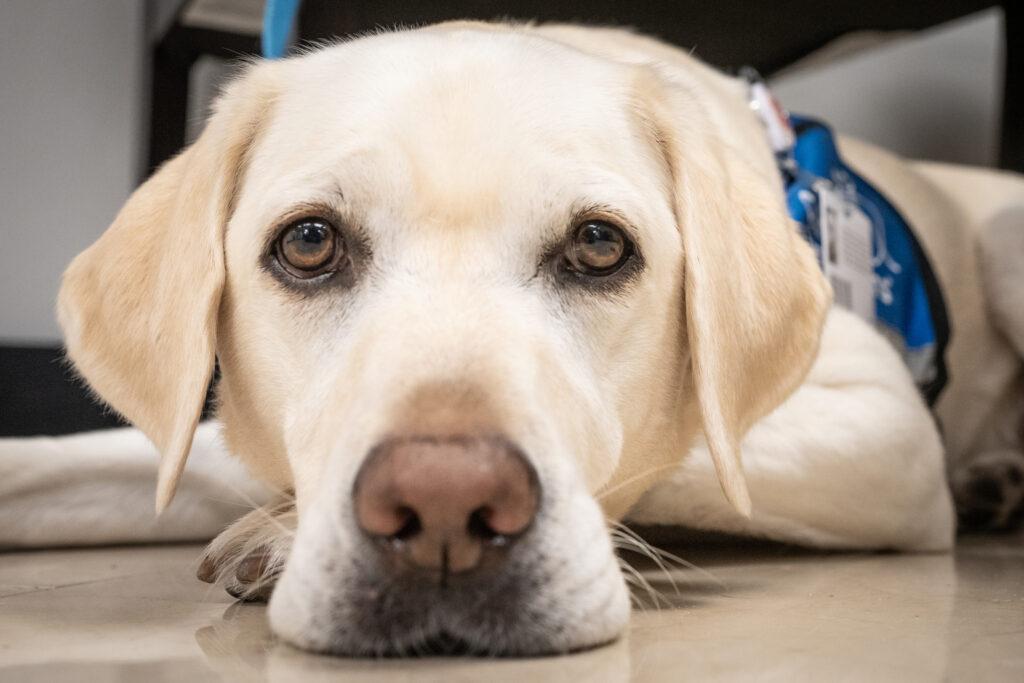
Hart Van Denburg/CPR News
The presence of a dog, sometimes even laying over a child like a weighted blanket, prevents a kiddo’s anxiety from “getting ramped up,” said Catie Reed, a child life specialist and facility dog handler.
“Even if the procedure didn’t go very well or they were really stressed during the procedure, having the dog with them afterwards to just talk through it helps them calm down faster,” Reed said. It also helps reduce anxiety for the next time a patient needs a procedure.
The dogs also are valuable working with families and patients with limited English. “We found that our dogs from a cultural standpoint were really significantly contributing to decreased anxiety in the Hispanic population of children,” Wagner said, attributing it to the animal’s ability to naturally build trust.
A dog also works with the hospital chaplain, often in some of the toughest situations. “She really sort of transcends any cultural boundaries.”
This post was originally published on this site be sure to check out more of their content.



